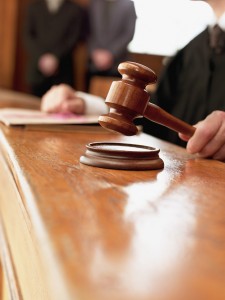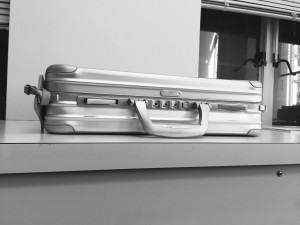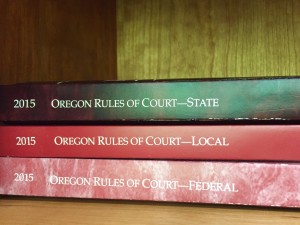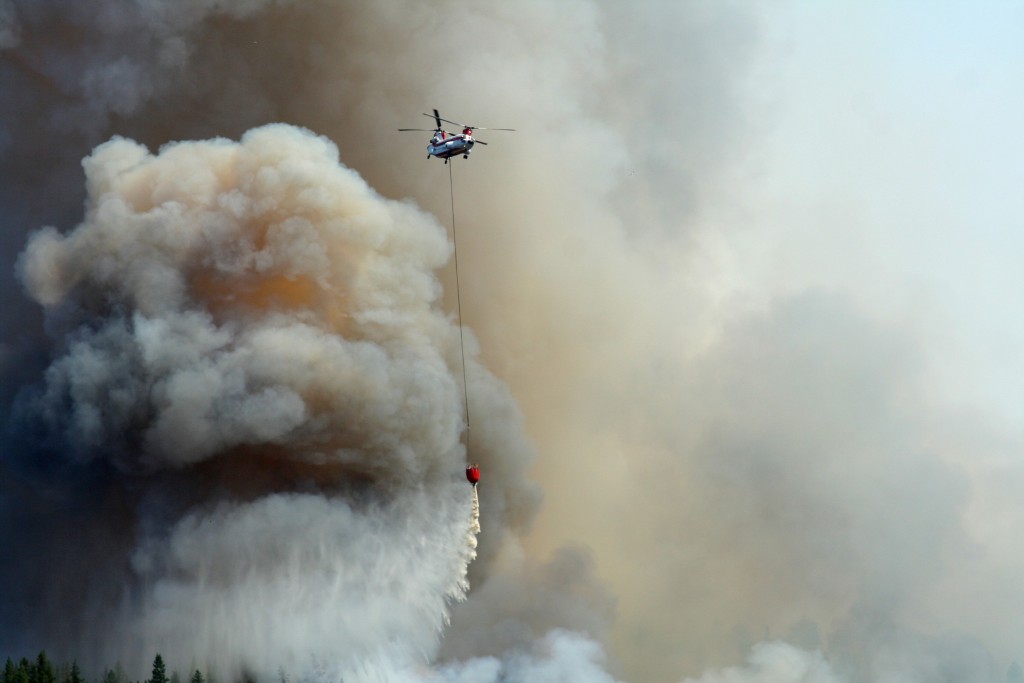
Lasley: A road map for pleading claims related to the fault of other defendants
Olson Brooksby PC often represents one or more defendants In multi-defendant product liability actions and aviation cases. The Oregon Supreme Court case of Lasley v Combined Transport, Inc., 351 Or 1 (2011), addressed the issue of causation in Oregon as it relates to negligence cases with multiple tortfeasors. Lasley also contains a detailed analysis regarding allocation of fault. It is instructive for defendants who have affirmative defenses relating to the fault of other parties, as well as cross-claims and indemnity and contribution claims against each other.
For example, in multi-party product liability and aviation cases, more often than not, there will be a two or more co-defendants who intend to present a unified, or at least not inconsistent, defense against the target defendant.
Lasley contains a road map for defendants in such cases and sets out how to properly plead claims concerning the fault of other defendants so that those claims may be appropriately considered by the jury.
What happened in Lasley?
In the Lasley case, a truck owned by defendant Combined Transport lost part of its load of panes of glass on the I-5 freeway. Id. at 4. The plaintiff in the case was among those stopped in traffic on the freeway while the glass dropped by defendant Combined Transport was being cleaned up. Id. While the plaintiff was stopped, Clemmer, the other defendant in the case, hit plaintiff’s pickup truck. Id. Defendant Clemmer was allegedly driving while intoxicated. The collision caused a gas leak from the plaintiff’s pickup which, in turn, caused a fire, killing the plaintiff. Id. The lawsuit against Clemmer and Combined Transport alleged “that Clemmer was negligent in driving at an excessive speed and in failing to keep a proper lookout and control of her car.” Id. at 13. Clemmer admitted fault. Id. Critically, “Plaintiff did not allege that Clemmer was negligent in driving while intoxicated.” Id.
Based on these pleadings, the trial court granted the plaintiff’s motion in limine to exclude evidence that Clemmer was intoxicated at the time of the collision, and the jury ultimately returned a verdict against both defendants, finding Combined Transport 22% at fault and Clemmer 78% at fault for plaintiff’s damages. Id. at 4.
On appeal, Combined Transport argued that the court should have allowed evidence of Clemmer’s negligence due to her intoxication because Combined Transport filed an answer including a general denial and filed a cross-claim against Clemmer for contribution based on negligence due to intoxication. Id. at 13-14. Specifically, Combined Transport alleged that Clemmer should “contribute such amount as is proportionate to her share.” Id. at 23. (Internal quotation marks omitted.) However, “Combined Transport did not allege in its cross-claim that it had paid more than its proportional share of liability or seek a money judgment against Clemmer.” Id. (Bolding added.) The plaintiff argued that evidence of Clemmer’s intoxication was properly excluded because the plaintiff did not allege that Clemmer was negligent in driving while intoxicated, and, therefore, Clemmer’s intoxication was not relevant to apportionment as framed by the pleadings. Id. at 13.
The court explained that Combined Transport should have included allegations of Clemmer’s negligence due to intoxication and Clemmer’s responsibility for contribution in Combined Transport’s answer as an affirmative defense. Id. at 23. The court held that:
“[A] defendant that does not allege that it has paid more than its proportional share of liability and that does not seek a separate judgment against a codefendant for the amount of that excess payment, but that instead seeks to avoid paying the full damages that a plaintiff has alleged on the basis that a codefendant is more at fault in a way that was not alleged by the plaintiff, must plead the specification of negligence on which the defendant relies as an affirmative defense in its answer to the plaintiff’s complaint and not in a separate cross-claim against the codefendant.”
Id. at 22-23.
As explained below, however, the court treated the Lasley case in a special way and allowed the cross-claim to be treated as an affirmative defense. Id. at 26. Most defendants in other multi-party cases, however, probably will not be so lucky.
Also, as explained below, the court went through a lengthy analysis of causation and negligence law in Oregon, and it also set out some critical Oregon-specific pleading rules in multi-defendant cases.
Causation in negligence cases involving multiple defendants under Lasley
The Lasley court stated that, in Oregon, “when the negligence of multiple tortfeasors combines to produce harm, each tortfeasor whose negligence was a cause of the harm may be held liable.” Id. at 6. Oregon law focuses on factual cause. Id. at 7. The Oregon Supreme Court “has abolished not only the terms but also the concepts of ‘proximate’ and ‘legal’ cause.” Id. at 6. Factually, if the defendant’s negligence harmed the plaintiff, the defendant is liable to the plaintiff as long as the injuries that the plaintiff suffered were reasonably foreseeable as a result of the defendant’s negligence. Id. at 7. Therefore, causation is “a purely factual matter” and is separate from the concept of liability (which is determined by whether the harm was reasonably foreseeable–not by ‘proximate’ or ‘legal’ cause). Id.
Under Oregon law, causation is determined based on the “substantial factor” test and is evaluated by looking at “causation in fact.” Id. (internal citation and quotation marks omitted). If the defendant’s conduct was a substantial factor in producing the harm that befell the plaintiff, the causation element is met. Id. The question is “whether someone examining the event without regard to legal consequences would conclude that the allegedly faulty conduct or condition in fact played a role in its occurrence.” Id. (internal citation and quotation marks omitted).
In Lasley, Combined Transport argued that its conduct was so minimal when compared to Clemmer’s that its conduct could not have been a substantial factor in causing the plaintiff’s death. Id. at 8. Specifically, Combined Transport argued that the trial court should have admitted evidence that Clemmer was intoxicated at the time of the accident and that, when compared to Clemmer’s egregious conduct, Combined Transport’s conduct was so minimal that it should not be held liable.
The court admitted that a case might exist where the causation element is met as to the first defendant such that the plaintiff’s injury would not have occurred absent that first defendant’s negligence. However, that first defendant’s act was so insignificant when compared to the act of the second defendant that the first defendant should not be held liable. Id. at 10. But the court declined to address such a circumstance, finding that those facts were not at issue in Lasley. Id.
Rather, the court held that, “both the conduct of Clemmer and the conduct of Combined Transport were substantial factors in contributing to decedent’s death.” Id. Clemmer admitted fault and the jury found that Combined Transport’s act of spilling the glass on I-5 caused the plaintiff to stop. Id. at 11. There was expert testimony that, had the decedent’s pickup been moving at the time of the impact, the pickup would not have ignited and the plaintiff would not have died. Id.
The court found that, even if the trial court had admitted evidence of Clemmer’s intoxication, Combined Transport’s conduct would not have been any less significant based on the evidence at trial. Id. at 11. The court reasoned that, “In deciding whether a defendant’s act is a factual cause of a plaintiff’s harm, the effect of the defendant’s conduct, and not whether that conduct fell below the expected standard of care, is the relevant consideration.” Id. Therefore, even if Clemmer was not intoxicated and did not engage in any negligent conduct, but still hit the decedent’s pickup while it was stopped, Clemmer’s conduct would have been a factual cause of the decedent’s harm. Id. The court explained that Combined Transport’s argument confused “causation” and “negligence.” Id. In other words, even if the trial court had introduced evidence regarding Clemmer’s intoxication, that would simply show “an additional way in which Clemmer deviated from the standard of care, it could not prove an additional way in which Clemmer contributed to the chain of events that caused decedent’s death.” Id. The focus is on “the effect of the defendant’s conduct, and not whether that conduct fell below the expected standard of care * * *.” Id. The court conceded that its analysis may have been different had Combined Transport proffered “evidence that showed that, because Clemmer was intoxicated, she inevitably would have killed decedent, even if his pickup had not been stationary.” Id. at 12. However, that argument was not made by Combined Transport at trial.
Apportionment of fault in multi-defendant cases under Lasley
Under Oregon law, when the fact finder determines that multiple defendants were at fault, the fact finder must apportion fault, based on percentages that equal 100, between those defendants. Id. at 13. The fact finder “is required to compare the degree to which each defendant deviated from the standard of care and is therefore ‘blameworthy.'” Id.
The plaintiff in Lasley argued that Clemmer’s intoxication was not relevant to the fault of the parties “as framed by the pleadings” because the plaintiff did not make such an allegation in his Complaint. Id.
Combined Transport argued that evidence of Clemmer’s intoxication should have been allowed because Combined Transport’s Answer included a general denial and it also cross-claimed against Clemmer for contribution on the basis of Clemmer’s intoxication. Id. at 13-14.
The court held that:
“in a comparative negligence case, a defendant that seeks to rely on a specification of negligence not alleged by the plaintiff to establish a codefendant’s proportional share of fault must affirmatively plead that specification of negligence and do so in its answer as an affirmative defense and not in a cross-claim for contribution.”
Id. at 14.
The court found that, under the unique facts of Lasley, Combined Transport’s cross-claim could be construed as an affirmative defense alleging that Clemmer was negligent by driving under the influence. Id. The court therefore held that the trial court erred in excluding evidence of Clemmer’s intoxication. Id. It is important to note that the court stressed that Lasley was a very unique case and was almost a “one-off” exception to the holding that specific facts underlying a negligence claim not pleaded by a plaintiff must be pleaded by a defendant as an affirmative defense if the defendant wants to rely on those facts at trial. As a rule, such facts should not be pled as a cross-claim for contribution. In other words, “a defendant that intends to rely on a specification of negligence not pleaded by a plaintiff must affirmatively plead those facts to make them admissible.” Id. at 15. (Bolding added.)
The court explained that Combined Transport’s general denial was not sufficient to put into issue facts that the plaintiff had not pleaded in his Complaint. Id. at 17. A general denial only allows for evidence that contradicts “facts necessary to be proved by plaintiff * * *.” Id (internal quotation marks and citation omitted). In contrast, an affirmative defense pleads “a new matter” that “does not directly controvert a fact necessary to be established by plaintiff * * *.” Id (internal quotation marks and citation omitted).
A “new matter” consists of facts “different from those averred by the plaintiff and not embraced within the judicial inquiry into their truth.” Id (internal quotation marks and citation omitted). In other words, “When a defendant seeks to avoid liability for the damages that a plaintiff claims by asserting that a codefendant engaged in more blameworthy negligent conduct not pleaded by the plaintiff, the defendant relies for that defensive posture on facts different from those averred by the plaintiff.” Id.
The court held that:
“a defendant that does not allege that it has paid more than its proportional share of liability and that does not seek a separate judgment against a codefendant for the amount of that excess payment, but that instead seeks to avoid paying the full damages that a plaintiff has alleged on the basis that a codefendant is more at fault in a way that was not alleged by the plaintiff, must plead the specification of negligence on which the defendant relies as an affirmative defense in its answer to the plaintiff’s complaint and not in a separate cross-claim against the codefendant.”
Id. at 22-23.
Under the facts of Lasley, “Combined Transport did not allege in its cross-claim that it had paid more than its proportional share of liability or seek a money judgment against Clemmer.” Id. at 23. Rather, Combined Transport alleged that Clemmer was driving while intoxicated and that Clemmer should “‘contribute such amount as is proportionate to her share.'” Id. The court found that Combined Transport should have made those allegations as an affirmative defense. Id.
However, the court noted that:
“Combined Transport did allege, in its cross-claim, the fact of Clemmer’s intoxication and its theory that Clemmer’s intoxication should be considered in determining Clemmer’s proportional share of liability. Combined Transport was incorrect in selecting the pleading that it was required to use, but was correct in recognizing that it must plead those allegations to make Clemmer’s intoxication relevant to the jury’s determination of comparative fault. The trial court was correct that a cross-claim for contribution was premature, but it was incorrect that there was no role for Combined Transport’s pleading alleging negligence by Clemmer that was not pleaded by plaintiff. A pleading was necessary to make Clemmer’s intoxication material and to allow the jury to consider that conduct in comparing the fault of Clemmer and Combined Transport.”
Id. at 26.
Therefore, the court held that, “in the unique circumstances of this case, the cross-claim that Combined Transport proffered fulfilled the function of an affirmative defense, viz., to put the plaintiff on notice of the theory and facts comprising the defendant’s defense.” Id. (bolding added). The court found it significant that, at the time of trial, it was unclear (due to the trial court’s rulings) which pleading Combined Transport was required to use and Combined Transport’s cross-claim did apprise the plaintiff “of the facts on which it intended to rely and the purpose of those facts. In that narrow circumstance, the defect in designating the pleading as a cross-claim rather than as an affirmative defense did not affect the substantial rights of plaintiff.” Id. at 27 (bolding added).
The court added that, “However, for the reasons we have stated, the evidence of Clemmer’s intoxication was not relevant on the issues of causation, liability, or damages. Therefore, we remand the case for a new trial limited to the degree of fault of each defendant ‘expressed as a percentage of the total fault’ attributable to each defendant.” Id. at 27.
Pleading requirements and rules for defendants who want to ensure that fault is allocated to another party
The court also spelled out additional pleading requirements under Oregon law when a defendant wants to ensure that fault is allocated to another party:
– “When a defendant seeks to avoid liability to the plaintiff by asserting that the plaintiff or another tortfeasor should be held responsible for the plaintiff’s damages, Oregon law also anticipates that the defendant will alternatively plead the facts on which it relies.” Id. at 16.
– “When a defendant contends that the plaintiff was at fault, the defendant must affirmatively plead ‘comparative or contributory negligence’ in its answer as an affirmative defense. ORCP 19 B.” Lasley, 351 Or at 16.
– “When a defendant contends that a tortfeasor who has not been joined in the action or with whom the plaintiff has settled was at fault, the defendant must file a third-party complaint against the tortfeasor or otherwise affirmatively allege the fault of that tortfeasor. ORS 31.600(3).” Lasley, 351 Or at 16.
– “When a defendant contends that a codefendant was at fault, the defendant also must affirmatively allege the unpleaded fault of the codefendant. * * * ORCP 19 B requires that a party set forth affirmatively allegations of ‘comparative negligence.’ That requirement is not limited to allegations of the comparative negligence of a plaintiff. Lasley, 351 Or at 16-17.
– “ORCP 19 B requires a defendant to set forth affirmatively ‘any other matter constituting an avoidance or affirmative defense.'” Lasley, 351 Or at 17.
– “A general denial is required to ‘fairly meet the substance of the allegations denied.’ ORCP 19 A. Therefore, a general denial does not put at issue facts that a plaintiff has not pleaded.” Lasley, 351 Or at 17.
– Under ORS 31.600(3) and ORCP 19 B, “a defendant must, in some way, affirmatively plead a specification of negligence on which it intends to rely, and that has not been pleaded by the plaintiff, to establish the fault of a codefendant. A general denial wil not permit a defendant to adduce evidence of a codefendant’s unpleaded negligence to avoid liability to the plaintiff.” Lasley, 351 Or at 17.
– “[T]he proportional share of fault of each tortfeasor will be determined in the negligence action brought by the plaintiff.” Id. at 18.
– Oregon no longer has joint and several liability. “Now, under ORS 31.610, liability is several only; a tortfeasor is responsible only for its percentage of fault as determined in the action brought by the plaintiff.” Lasley, 351 Or at 19.
– Under Oregon’s comparative negligence law, “no tortfeasor is liable for more than its percentage of fault, and that percentage of fault is determined in the original negligence action brought by the plaintiff. ORS 31.610(2); ORS 31.805.” Lasley, 351 Or at 21.
– “A defendant cannot bring a contribution action to seek a different determination of its percentage of fault. A contribution action serves only to permit a defendant who has ‘paid more’ than its ‘proportional share of the common liability’ to obtain contribution from another person who is also liable for the same injury or death. ORS 31.800(2).” Lasley, 351 Or at 21.
– Although Oregon law allows for contribution claims under ORS 31.800(2), “Because a defendant’s liability is several only and the defendant is not obligated to pay more than its proportional share of liability, it seems that the circumstances in which a defendant will pay more than its proportional share and, therefore, have a reason to seek contribution from a codefendant will be quite limited.” Lasley, 351 Or at 21.
– If a defendant does pay more than its proportional share and has a reason to seek contribution from a codefendant, that defendant “could use a cross-claim to assert a claim for contribution against a codefendant. ORCP 22 B defines a cross-claim as a claim ‘existing in favor of the defendant asserting the cross-claim and against another defendant, between whom a separate judgment might be had in the action [.]’ A defendant who ‘has paid’ its proportional share could seek a separate judgment against a codefendant for the excess amount of its payment and do so by means of a cross-claim.” Lasley, 351 Or at 21.
– A cross-clam for contribution should not be used “by a defendant to allege that a co-defendant is at fault for the plaintiff’s damages and should be held liable, not to the defendant, but to the plaintiff. In that instance, the defendant does not seek a separate judgment against the codefendant as required by ORCP 22 B. Even so, the comparative negligence statutes indicate that such a pleading may be permitted.” Lasley, 351 Or at 21.
– “[W]hen a plaintiff does not join a tortfeasor as a defendant, the comparative negligence statutes permit the named defendant to file a third-party complaint against the tortfeasor. ORS 31.600(3). In that instance, the third-party defendant will not be liable to the defendant but, potentially, will be liable to the plaintiff.” Lasley, 351 Or at 22.
– “ORCP 22 C(1) restricts third-party claims to circumstances in which a third party ‘is or may be liable to the third party plaintiff.'” Lasley, 351 Or at 22.
– Even though ORCP 22 C(1) “indicates that a third-party claim is designed for the circumstance in which the third-party defendant is or may be liable to the third-party plaintiff, ORS 31.600(3) permits a defendant to file a third-party complaint to allege that a third-party defendant is at fault and potentially liable to the plaintiff.” Lasley, 351 Or at 22.
– “ORS 31.600(2) specifically provides that the fact that a plaintiff is not a party to the third-party claim does not pervent the trier of fact from comparing the fault of the third-party defendant in the action brought by the plaintiff.” Lasley, 351 Or at 22.
– “[T]he legislature anticipated that a defendant could file a third-party complaint against a tortfeasor who would not be liable to the defendant but who could, instead, be liable to the plaintiff. Whether the legislature intended to permit a defendant to make a cross-claim against a codefendant who would not be liable to the defendant but, instead, would be liable to the plaintiff, is unclear.” Id.
– “Neither an affirmative defense nor a cross-claim for contribution is ideally designed as a mechanism for a defendant to plead the negligence of a codefendant that is not pleaded by the plaintiff and thereby to avoid or reduce the defendant’s liability to the plaintiff. An affirmative defense is directed at a plaintiff, not at a codefendant.” That said, “an affirmative defense is the pleading mechanism that a defendant should use. The use of an affirmative defense is consistent with the terms of ORCP 19 B, whereas the use of a cross-claim for contribution would require modification of the terms of ORCP 22 B(1) and ORS 31.800.” Lasley, 351 Or at 22.
– “We hold that a defendant that does not allege that it has paid more than its proportional share of liability and that does not seek a separate judgment against a codefendant for the amount of that excess payment, but that instead seek to avoid paying the full damages that a plaintiff has alleged on the basis that a codefendant is more at fault in a way that was not alleged by the plaintiff, must plead the specification of negligence on which the defendant relies as an affirmative defense in its answer to the plaintiff’s complaint and not in a separate cross-claim against the codefendant.” Id. at 22-23.
– A cross-claim for contribution is directed at a codefendant and is not designed to avoid liability to a plaintiff. Id. at 22.
– “[A] defendant who wishes to have the jury consider the unpleaded negligence of a codefendant in making” the comparison of fault of the parties “is required to plead the facts establishing that negligence. The fact that the codefendant has accepted liability based on the facts alleged by the plaintiff does not eliminate that requirement. Thus, in this case, to have the jury consider evidence of Clemmer’s intoxication in comparing the fault of the parties, either plaintiff or Combined Transport had to allege those facts. Plaintiff did not do so, and the pleading burden fell on Combined Transport.” Id. at 26.





